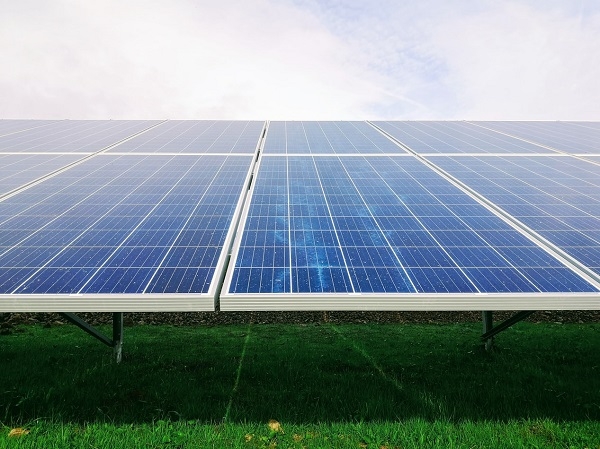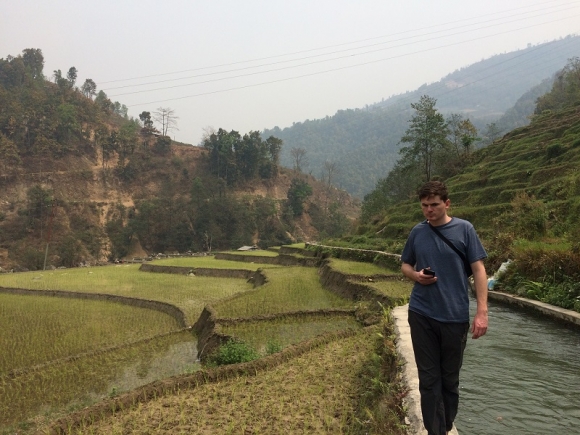
In this “5 quick questions” blog we introduce the new UN specification for classifying and reporting solar resources, which is currently in draft form and open for public comment. We talk to Jeremy Webb, who led the development of the document as Chair of the Solar Energy Sub-Group of the United Nations Economic Commission for Europe’s Expert Group on Resource Management about the importance of the Solar Specifications and how to get involved.
This interview was conducted by Dr Long Seng To, RAEng Engineering for Development Research Fellow, Loughborough University.
What are the “Specifications for the application of the United Nations Framework Classification for Resources (UNFC) to Solar Energy”?
The Solar Specifications show how solar energy resources and projects can be classified, taking into account the maturity of projects and the physical confidence of energy actually being utilised. The Solar Specifications are based on the Renewable Energy Specifications and the United Nations Framework Classification which show how competing renewable and non-renewable energy resources can be classified and compared. It should also be noted that the UNFC can be applied to minerals, including coal and uranium as well as other types of resources such as water or even the capacity of reservoirs for carbon dioxide injection and sequestration.
Why are the Solar Specifications important?
The Solar Specifications coupled with the wider family of UNFC related standards, make it possible to have balanced and fair comparisons between different resources. I personally think solar energy has been at a disadvantage relative to oil and gas for example, because oil and gas are assessed in terms of the energy that can be extracted over the lifetime of a project. However, solar energy is typically assessed in terms of energy that can be utilised over the period of a year. What the Solar Specifications and the UNFC does, is compare the solar energy that might be available over the lifespan of the solar energy project, with the estimated energy from oil and gas that might be extracted over the lifespan of an oil and gas project. This is a much fairer and balanced comparison.
I should also mention that by classifying resources and projects using the UNFC means you can compare the maturity of competing projects and monitor a portfolio of projects for example within a company or at the national level. This is useful when making policy decisions or deciding which projects to pursue further and make investments in.
What impact do you hope the Solar Specifications will have?
I very much hope the Solar Specifications, and the work of the wider Expert Group on Resource Management, will help address some of the pressing challenges of our time. This includes helping towards fulfilling the Sustainable Development Goals, in particular SDG goals 7 and 13, which regard affordable and clean energy, and climate action. For example, there is a real opportunity for oil and gas companies to engage with the Solar Specifications, unifying their internal resource classification, reporting and investment decision making processes. This will allow energy companies, with interests in oil and gas as well as renewable energy, more flexibility to match their reserves (i.e. commercial resources) with changing energy demand, for example due to the electrification of transport. This kind of change would help smooth the energy transition and transformation required.
If regulators and stock exchanges come on board, it might even be possible for oil and gas companies to reporting renewable energy reserves alongside non-renewable energy reserves so that investors can see the extent to which these companies are matching changing energy demand and replacing extracted reserves with renewable energy reserves.
Is it relevant for developing countries?
Very much so. We’ve had discussions in the Solar Energy Subgroup and the Renewable Energy Working Group about that fact that renewable energy projects, including solar energy projects, have been at a disadvantage when it comes to getting finance and loans from banks in developing countries. A key issue seems to be the lack of familiarity with renewable energy projects, hence banks have been unwilling to lend as much of the value of the project, compared to banks in more mature renewable energy markets. This limits access to essential finance. However, many of these same banks in developing countries may already be familiar with oil and gas, or minerals projects and how they are reported, and as such, the Solar Specifications may provide a familiar template for solar project developers to report information to banks, showing the maturity (i.e. viability and feasibility) of the project as well as the confidence of energy estimates for the project. The hope is that the Solar Specifications, with its familiar format, may make it easier for banks in developing countries to lend more money for solar energy projects.
Government is another important potential user for the solar specifications. Many developing countries have renewable energy assessments, but these tend to focus on the physical characteristics of the resource rather than the useful energy that might actually be of benefit to the country, and in many cases do not take into account issues of infrastructure or market access, things that are central to the UNFC and Solar Specifications. As such, the UNFC and Solar Specifications provide developing and developed countries alike, with a framework for making resources assessments and monitoring the energy project pipeline, including projects that are about to come onstream.
What are the next steps for the Solar Specifications?
This is a great question. The immediate next step is to get feedback on the draft Solar Specifications which are currently available on the United Nations Economic Commission for Europe website. I would strongly encourage members of Low Carbon Energy for Development Network to visit the website, download and read the draft Solar Specifications and provide your feedback by email to reserves.energy[AT]un.org.
We are also very eager to hear from LCEDN members that want to test the Solar Specifications on real world projects they are involved in. Developing more case studies is a priority going forward.
In addition to these things, advocacy and application is required. We are reaching out and engaging with the wider solar energy community, including energy companies, banks and governments on how the Solar Specifications might help them with their interests. We see a lot of potential and many opportunities, and through collaboration with groups such as LCEDN, expect the UNFC and Solar Specifications to make an important contribution to fulfilling necessary energy transitions and transformations.
You can read the draft Solar Specifications and provide comments here (until 30 August 2019):




